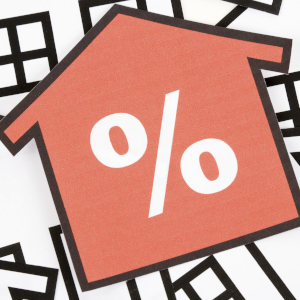The fastest-growing locations in Australia have been revealed by new data, with three states home to suburbs that have experienced more than 30 per cent growth.
South Australia and New South Wales dominate the latest list of fast-growing suburbs, with each state recording four suburbs with median capital growth figures in excess of 30 per cent for the quarter, according to CoreLogic RP Data.
Gladstone, a small town in South Australia’s mid-north, recorded the highest quarterly growth figure in the country at 35 per cent. That figure is calculated on a current median house value of $67,500.
Houses in Stansbury (34.78 per cent growth on a median price of $310,000), units in Salisbury Downs (33.55 per cent on a median price of $280,000) and units in Nailsworth (30.96 per cent on a median of $349,000) also made the list. These suburbs ranked as the second-, fifth- and eighth-fastest growing suburbs in Australia respectively.
Third spot overall went to Deviot in Tasmania, which recorded a growth rate of 33.83 per cent based on a median value of $360,000.
In New South Wales, the fastest-growing suburb was Linley Point, on the Lane Cove River
The suburb recorded a growth rate of 33.78 per cent in house prices based on a median value of $3 million, making it the fourth-fastest growing in the country.
Nicholas McEvoy is director of Bresic Whitney Hunters Hill and is familiar with the area.
“Linley Point is basically a small, waterfront suburb and the closest suburbs to it are Hunters Hill and Lane Cove,” Mr McEvoy said. “The majority of the buyers who come into the area generally look either in that Hunters Hill/Woolwich pocket, or they are looking in that Lane Cove/Longueville pocket – they generally stumble across it.”
Mr McEvoy said the recent sale of several waterfront homes, combined with the suburb’s small size (about 100 properties) is probably the reason behind its strong performance. With a mix of period homes and new-age architecture, the suburb is popular with owner-occupier families and investor activity is marginal.
“Most of the properties in the area are waterfront homes,” he said. “Most of the people looking in that Linley Point area are families. They’re either young families or older families who have been there for a long time.”
Other New South Wales suburbs recording a 30 per cent-plus growth figure were Luddenham (32.86 per cent, $835,000), Macmasters Beach (31.92 per cent, $857,500) and Arcadia (30.61 per cent, $1.6 million).
Their respective national ranks were sixth, seventh and ninth.
Although only three states experienced growth rates above 30 per cent, all states and territories recorded at least one suburb with house or unit prices growing above 20 per cent.
Manjimup in Western Australia recorded a figure of 29.25 per cent, Cape Schanck in Victoria had a figure of 29.03 per cent, Harlaxton in Queensland recorded 27.89 per cent, Reid in the Australian Capital Territory recorded 23.68 per cent and Bellamack in the Northern Territory recorded 23.15 per cent.
On the west coast, the Perth suburb of Wembley Downs was the best-performing metropolitan market, recording a 25.13 per cent growth in median unit values over the three months with a median price of $617,500.
Liz Sterzel, director of Perth buyer’s agency Property Wizards, explained that Wembley Downs is an affluent place popular with owner occupiers.
“The area predominantly attracts home owners and has a very high rate of ownership versus tenants. One the one hand, this is beneficial to investors due to the demand for properties by renters. However, due to the high land value in the area, rental returns are likely to be very low,” she said.
Ms Sterzel predicted that houses in the area may be in line for a boost in capital growth based on long-term price data of surrounding suburbs.
“At two-thirds the median price of neighbouring City Beach, Wembley Downs’ 10-year growth is in line with surrounding suburbs and the Perth metropolitan area, giving it potential for a little catch up. Growth in the long term is likely to resume and then continue at the rate of surrounding suburbs, which has historically been around seven per cent per annum over 10 years.”








